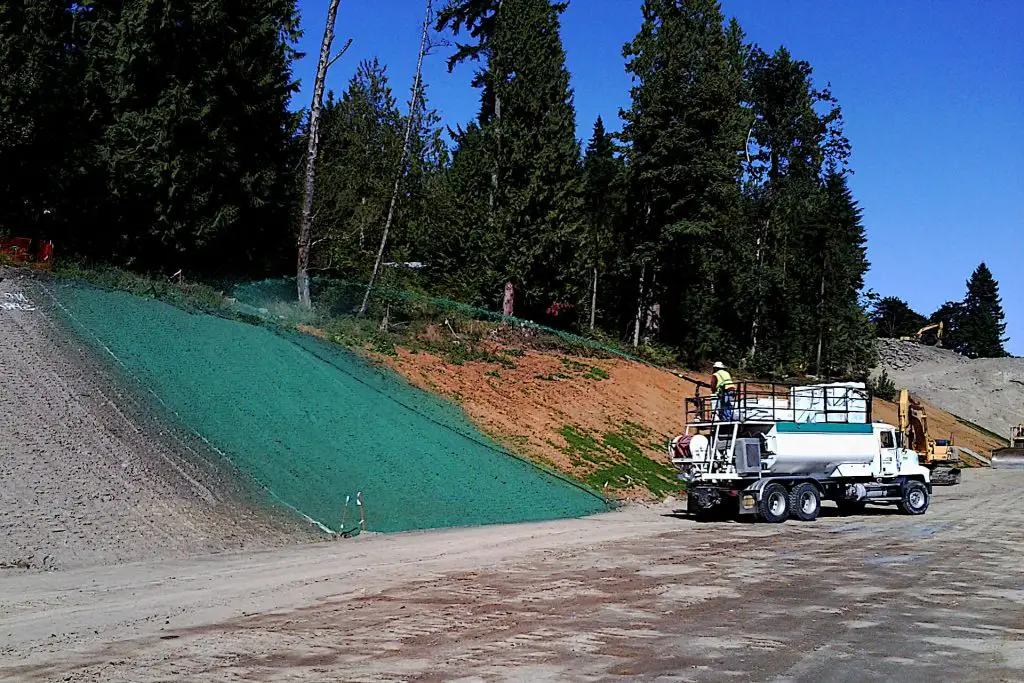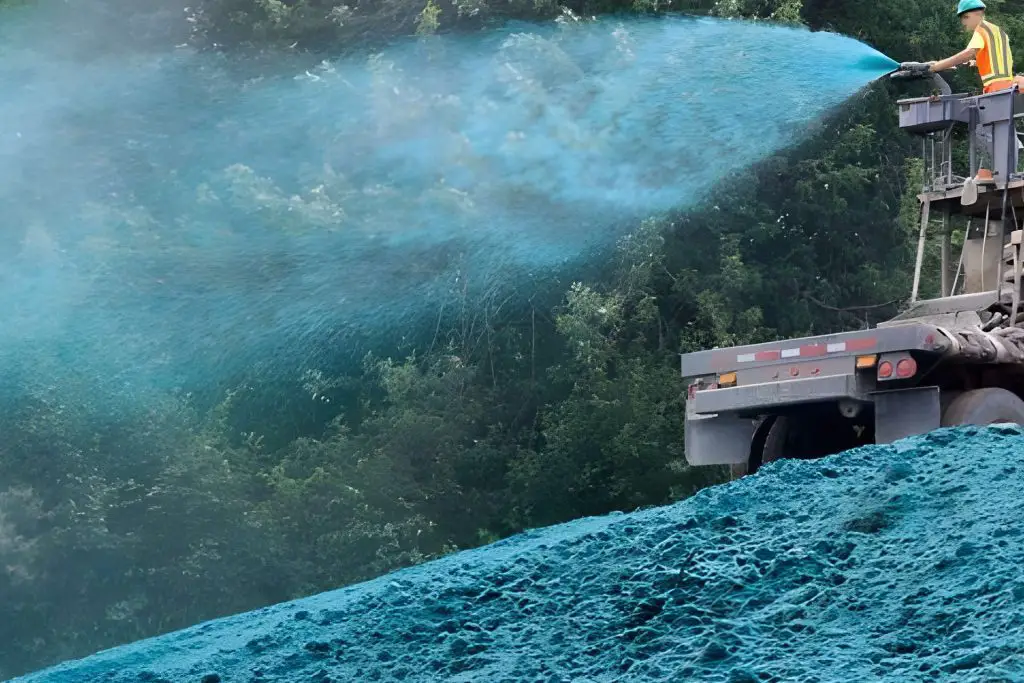What Is Hydroseeding? | Understanding the Hydroseeding Process
Hydroseeding is the name given to the hydraulic delivery processes for the distribution of a thick slurry, which is a combination of seed, water, mulch, fertilizer (and other components, dependent on the project requirements) via a pressurized hose or turret-mounted gun.
Hydroseeding is fast becoming one of the most popular methods of putting or refreshing a lawn, but what is hydroseeding, and is it effective? Hydroseeding is used both for residential and industrial use cases and is generally applied to non-agricultural lands such as household yards, golf courses, parks, roadsides, parking lots, etc., where it is used to establish vegetation, new lawns, control weeds, reduce erosion[1], improve drainage, enhance aesthetics and revitalize lawns.
The list of use cases for hydroseeding, and its companion process, hydromulching, is extensive due to the adaptability of the hydroseed slurry mix and the flexibility of the distribution. In terms of industrial uses, erosion, and dust control, together with revegetation of mines, quarries, and brownfield sites, have become important.
What Does the Term Hydroseeding Mean?
The term “hydro” refers to water, and “seeding” refers to distributing the mixture. The process involves spraying a mixture of seeds, fertilizers, herbicides, pesticides, and other additives onto the ground in order to grow grass or other plants and crops. It can be used as a way to cover bare spots in fields with vegetation.

What Is the Hydroseeding Process
The hydroseeding process is a single-step application. The mixture of mulch, various varieties of grass seed, fertilizer suitable for hydroseeding, and other components are combined in a tank that is equipped with an agitation system, which produces a slurry that is homogeneous in nature. The slurry is spread via a high-pressure hose uniformly over the target area. This forms a blanket that protects the seed from poor weather and possible erosion.
The hydroseeding process itself is fast and efficient and provides flexible choices over mulches, fertilizers, and types of grass seed used in the hydroseeding mix. As with dry seeding, you shouldn’t walk on it until the seed has been established. Although the mulch itself is safe, you should ensure your pets remain inside during the application of the slurry and keep your dogs away from your hydroseeded lawn until you are able to walk on it.
The hydroseeding procedure makes grassing over difficult terrain, that conventional seeding methods find difficult, relatively straightforward. Whether the target area is irregular, sloping, is hilly, or has banks, the application technique can mitigate most of the problems of evenly seeding the area.
History of Hydroseeding
Maurice Mandell, a Highway Department of Connecticut employee, developed hydroseeding in the late 1940s as a practical means of seeding highway embankments. An entrepreneur named Charlie Finn saw that its uses could be applied to residential and other settings, and he was quick to introduce the first hydroseeder machine for commercial use.
Hydroseeding has been utilized extensively in the United States for erosion control reduction throughout the years, which is especially beneficial in a nation with extensive landmasses.
It has been especially effective in shelving and revitalizing disused quarries and mines. The 1977 Surface Mine Reclamation Act prompted the extensive use of hydro mulching. Hydro mulching was crucial because, for these machines spraying areas up to 400 feet away and 200-foot-high inclines, like those of old Appalachian coalfields, didn’t present any problems.
Commercial Hydroseeding

Hydroseeding quickly became popular because it was seen as a reasonably easy and cost-effective way of producing a lawn or grassy area. Its flexibility, in terms of grass seed mixes, cost, and speedier germination times, made it particularly appealing to homeowners looking to establish or revitalize lawns.
Hydroseeded landscapes look great when they’re done right, but there’s no doubt that hydroseeding is not always easy. You’ll need to know how much material you will need, what type of equipment you will be required, as well as be able to adapt the mixes to local conditions.
Industrial Hydroseeding
As we have noted, hydroseeding came out of an industrial use case, and it is still where its true abilities lay.
It has become an important method for fighting soil erosion, with many mulches specially designed to help with this process.
Hydroseeding has many environmental uses. Dust control, particularly in dry arid climates, is becoming increasingly common, as well as dealing with soil erosion and revegetation after wildfires.
Hydroseeding Contractors
Landscaping contractors and anybody who needs to plant seeds will find this approach excellent. Using hydroseeding can be a very cost-effective solution. A lawn can be hydroseeded in a third of the time it takes using more traditional seeding and overseeding methods. This results in a substantial reduction in labor costs, with the process often being accomplished by just one person, with the material cost involved being similar.
With hydroseeding, compared to laying sod, the savings are even greater, with the expense of hydroseeding being around 60% less if employing commercial contractors, depending on grass variety choices. Although you don’t get an instant lawn as with sod, the hydrated seed kick-starts the growing process.
Why Is Hydroseeding Effective

Hydroseeding is effective for several reasons. The nutrient-rich slurry produced in the mix has the seed suspended within it. The germination process begins when the seed combines with the water in the machine, with each seed soaking up its water to its maximum capacity.
The mulch then acts as a moisture barrier and stabilizes the soil, and also creates a protective blanket for the new seed. It is important, though, to ensure that the seed is sown at the correct depth. The combination of all of these factors should create the ideal circumstances l for rapidly establishing the seed in the soil and should result in a beautiful lawn or grass area.
Final Thoughts: What is hydroseeding?
Above, we have looked at what is hydroseeding and what its various applications and advantages are. In a nutshell, hydroseeding is not a type of grass but a process for applying seed, generally grass, to the ground. There are many advantages of hydroseeding being your chosen lawn establishment method. It mixes all the necessary components of seed mulch and fertilizer and is a fast and efficient way of distributing seed over the target area.
We have also seen that, although generally used for laying down grass as it is a process, it can be used with any type of crop and is sometimes used in agricultural settings. Because of its flexibility, it is particularly effective for laying down seeds on difficult terrain and arid conditions, as well as being able to cover large areas and deal with large-scale seeding requirements.
It has also proved a very effective way of dealing with soil erosion problems using specific mixes of grass seed varieties or through its counterpart process, hydromulching (difference between hydroseeding and hydromulching).
The nature of the process means that it might not necessarily be the best choice for grassing or laying small lawns. Although it is a cost-effective process, the bulk of the work is in the preparation of the mix, which is largely the same irrespective of size.
In brief, hydroseeding is an incredibly efficient way of establishing grass areas and lawns, in most conditions, at a cost comparable and often much less than traditional seeding methods, and an effective way of dealing with soil erosion and industrial revegetation..
Notes:
- Lisa Woo Shanks, Dennis E. Moore, and Charlette Epifanio Sanders, University of California: Soil Erosion
